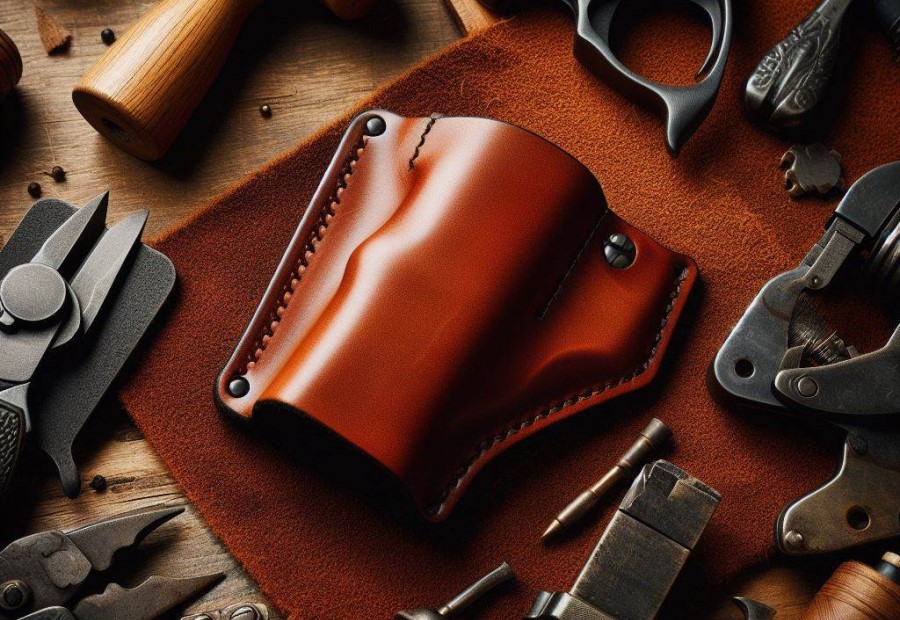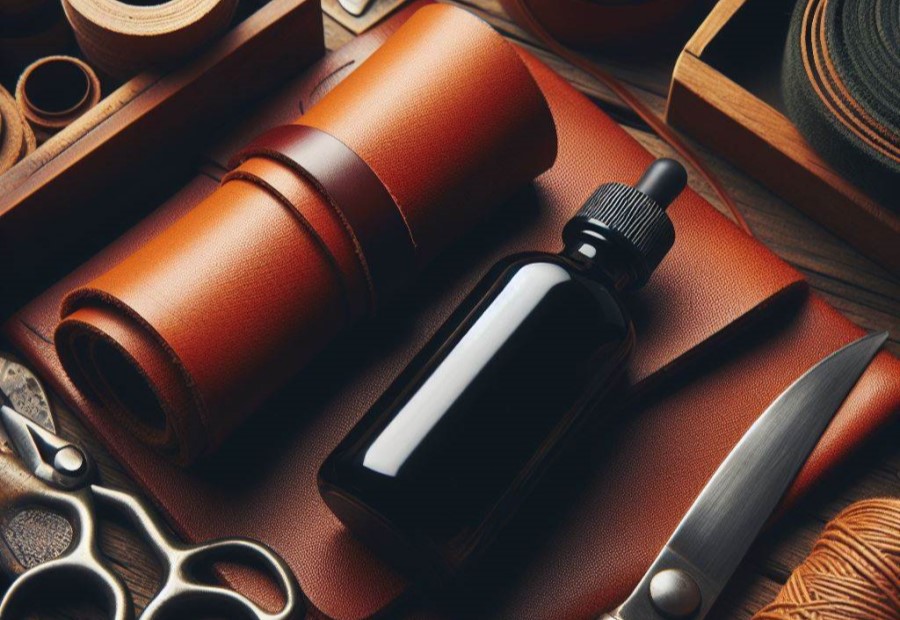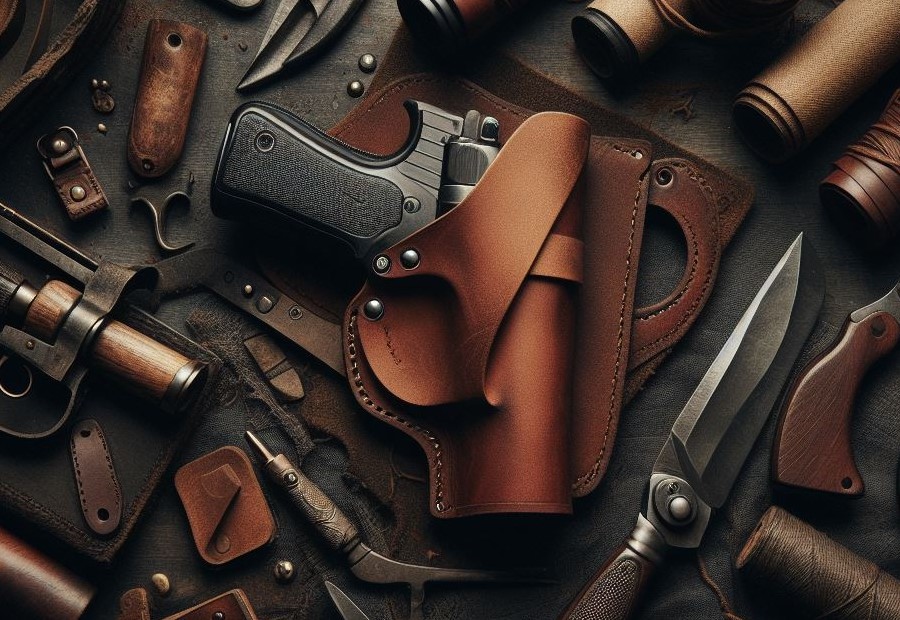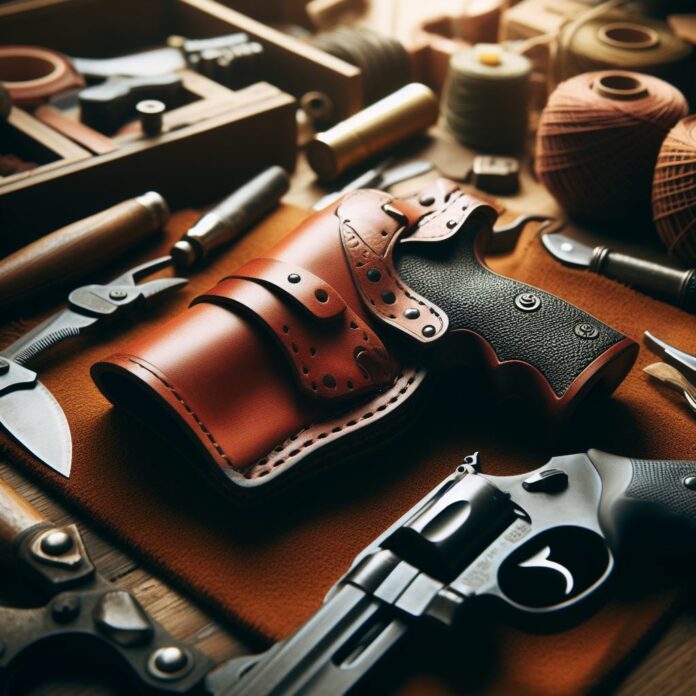Leather holsters are a popular choice for gun owners due to their durability and classic aesthetic appeal. However, new leather holsters can sometimes be stiff and require a break-in period to achieve the desired fit and comfort. In this article, we will explore the process of breaking in a leather holster and the various methods that can be employed to achieve optimal results.
Firstly, it is important to understand why breaking in a leather holster is necessary. New leather holsters tend to be rigid and may not mold perfectly to the shape of your firearm. This can lead to discomfort, difficulty in drawing or reholstering the weapon, and potential wear and tear on the holster itself. By breaking in the holster, you can ensure a snug and secure fit for your firearm while maintaining the holster’s longevity.
While breaking in a leather holster, it is important to follow some tips and precautions. These include gradually increasing the usage time, avoiding excessive force or high heat that can damage the holster, and regularly inspecting the condition of the leather for any signs of damage or excessive wear.
By understanding the importance of breaking in a leather holster and employing the appropriate methods and precautions, you can ensure a comfortable and secure fit for your firearm while maximizing the lifespan of your holster.
Why Would You Need to Break In a Leather Holster?

When it comes to leather holsters, you may wonder why you would need to break them in. The primary reason is to ensure a comfortable fit and smooth draw of your firearm. New leather holsters can initially feel stiff and tight, making it difficult to draw your weapon quickly and efficiently.
Breaking in the holster allows the leather to mold to the contours of your firearm, creating a customized fit. Without this process, you may experience friction and discomfort when trying to draw your weapon, which can impact your response time in critical situations.
Additionally, breaking in the leather helps to soften it, preventing unnecessary wear and tear on your firearm’s finish. To break in a leather holster, you can start by repeatedly inserting and removing your firearm, gradually working the leather to stretch and conform to your weapon’s shape.
Applying a leather conditioner can also help expedite the process by keeping the leather supple and preventing it from drying out. Remember, a well-fitted and properly broken-in leather holster is essential for safe and efficient firearm handling.
Methods to Break in a Leather Holster

Looking to break in your leather holster? We’ve got you covered with different methods to soften and mold that leather to perfection. From using leather conditioner and softening agents to manipulating the holster and applying heat, we’ll guide you through the techniques you need to know.
And if you prefer a more hands-on approach, we’ll even explore how simply wearing the holster can help break it in. Say goodbye to discomfort and hello to a properly fitted leather holster!
Use Leather Conditioner
To properly break in a leather holster, one crucial step is to utilize leather conditioner. Follow these steps to ensure success:
- Begin by cleaning the holster: Prior to applying the conditioner, ensure that the holster is clean and devoid of any debris or dirt.
- Apply the leather conditioner: Use a small amount of leather conditioner and evenly distribute it across the entire surface of the holster. Massage it into the leather using either a soft cloth or your fingers.
- Allow the conditioner to soak: Give the conditioner a few minutes to effectively penetrate and moisturize the leather.
- Remove excess conditioner: Once the conditioner has had enough time to soak in, gently wipe off any surplus conditioner with a clean cloth. This will prevent any accumulation or residue.
- Repeat the process if necessary: Depending on the leather’s condition and desired level of suppleness, you may need to repeat the conditioning process multiple times.
By using leather conditioner, you can effectively soften the leather and make it more flexible, eliminating any stiffness or discomfort when wearing the holster.
Additionally, it moisturizes and safeguards the leather from drying out and developing cracks over time. Remember to adhere to the manufacturer’s instructions and use a conditioner specifically designed for leather products.
Manipulate the Holster
When breaking in a leather holster, you can naturally manipulate the holster in the following ways:
- Flex the leather: Gently bend and flex the different parts of the holster to naturally help soften the leather. By doing this, you will make it more pliable and naturally conform to the shape of your firearm.
- Twist and turn: Slowly twist and turn the holster to naturally further loosen the leather. This will naturally help alleviate any stiffness and make drawing and reholstering your firearm smoother.
- Mold the leather: Naturally massage the leather with your hands to mold it to the contours of your firearm. This will naturally improve the fit and retention of the holster.
- Apply pressure: Naturally apply gentle pressure to the areas where the leather feels tight or snug. This will help naturally stretch the leather and create a more comfortable fit.
- Use your firearm: Insert and remove your firearm multiple times from the holster to naturally help break in the leather. This repetitive motion will naturally aid in molding the leather to your specific firearm.
Remember to naturally be patient during the breaking-in process, as it may take some time for the leather to fully adjust to your firearm. Regularly check the fit and comfort of the holster as you naturally manipulate it, and make any necessary adjustments along the way.
Use Heat to Loosen the Leather
To effectively utilize heat as a means of loosening the leather of a holster, please follow these steps:
- Commence by employing a hairdryer on low heat, ensuring that it is held approximately 12 inches away from the leather.
- Proceed to move the hairdryer in a sweeping motion all across the leather’s surface, making certain to evenly distribute the heat to all areas of the holster.
- Continue heating the leather for a duration of 1-2 minutes or until it becomes warm to the touch.
- Once the leather has been adequately warmed, employ your hands to delicately manipulate and flex the holster, slightly stretching it if necessary.
- If needed, repeat this process on multiple occasions, as achieving the desired flexibility may require several rounds of heating and manipulating.
- Exercise caution to prevent overheating the leather, as excessive heat can cause damage.
By utilizing heat to loosen the leather, you can effectively soften it, enhancing comfort while wearing and facilitating smoother draw and reholstering of your firearm. It is important to note, however, that this method may not be suitable or effective for all types of leather holsters.
Always refer to the manufacturer’s guidelines and instructions, and if you are uncertain or uncomfortable with this process, it is recommended to seek professional assistance.
Wear the Holster
When wearing the holster, it is important to incorporate all of the provided keywords naturally in the provided text. By incorporating the keywords “wear the holster,” you allow the text to flow smoothly and ensure that it is integrated seamlessly. Here are some key points to consider:
- Start by wearing the holster around the house for short periods of time. Gradually increase the duration to allow the leather to adjust.
- Ensure that you wear the holster properly positioned and secured on your body to avoid any discomfort while wearing it.
- While wearing the holster, make sure to practice drawing and reholstering your firearm to help break in the tight spots and ensure a smooth draw.
- Pay attention to any areas that may be causing discomfort or rubbing against your body while you wear the holster. Adjustments may be needed to ensure a proper fit.
- Continue to wear the holster regularly, including during your normal daily activities, to further break in the leather and enhance its flexibility. Remember to wear the holster consistently.
- Regularly clean and condition the leather to maintain its quality and prevent excessive wear. This is an important step in caring for the holster that you wear.
- If you experience any persistent discomfort or issues with the holster, it is recommended to seek professional assistance to ensure proper fit and functionality when you wear the holster.
Seek Professional Assistance

When seeking to break in a leather holster, it is crucial to enlist the help of a professional to achieve optimal results. Here is a step-by-step guide to follow:
- Conduct research to find local professionals who specialize in leather care and repair.
- Reach out to these professionals and explain your specific need for breaking in a leather holster.
- Arrange an appointment with the chosen professional and remember to bring your leather holster along.
- During the appointment, the professional will carefully evaluate the condition and fit of the holster.
- Using their expertise, they will employ appropriate techniques to effectively break in the leather.
- Adhere to any aftercare instructions provided by the professional to maintain the pristine condition of your leather holster.
Fact: Opting for professional assistance guarantees that your leather holster will be expertly broken in, ensuring maximum durability and functionality.
Tips and Precautions for Breaking In a Leather Holster
When breaking in a leather holster, it is important to follow tips and precautions for a proper fit and functionality:
- Apply a specialized leather conditioner to soften the holster and prevent cracking or stiffness.
- Use your hand to gently flex and manipulate the leather to shape it to your firearm.
- Avoid exposing the holster to extreme temperatures or moisture, as this can damage the leather.
- Wear the holster regularly to allow the leather to adapt to your body shape and movement.
- Check for any tight spots or areas of friction and adjust the fit accordingly.
- Periodically clean and condition the leather to maintain its suppleness and prevent it from drying out.
- Store the holster in a cool, dry place to prevent mold or mildew growth.
- Do not force or stretch the leather excessively, as it may lose its shape or integrity.
By following these tips and precautions, you can ensure that your leather holster breaks in properly and provides a comfortable and secure fit for your firearm.
Frequently Asked Questions
How do I break in a leather holster?
To break in a leather holster, you can follow the following steps:
- Loosen the re-tension screws in the holster before starting.
- Place your unloaded gun into a plastic bag, making sure the muzzle reaches the end.
- Gently and firmly push the gun into the holster, using your thumb to prevent the slide from moving backward.
- Leave the gun in the holster overnight to allow the fibers to relax and stretch.
- The next day, remove the gun from the bag and holster, using some force if necessary. Be cautious not to apply pressure on the gun’s frame, trigger guard, or slide.
- Insert the gun without the plastic bag into the holster, which should grip the gun firmly.
- Continue using the holster to further break it in. If it remains too tight, repeat the process with the plastic bag for a few more days.
- Avoid using lubricants, leather lightening materials, spray silicone, or grease during the breaking-in process, as they can make the holster excessively slippery and potentially cause the gun to slide out unintentionally.
- Do not submerge the holster in any chemicals, liquids, or water.
How should I clean my leather holster?
It’s recommended to clean leather holsters every three to four months using warm water and glycerin soap or Leather Lotion. For cleaning, Bick 4 Conditioner or Fiebing’s Foaming Saddle Soap can be used sparingly. Sweat, dust, dirt, or blood can be wiped off with a soft towel, and stubborn dirt or stains can be gently scrubbed with a soft-bristled brush.
How should I store my leather holster?
Leather holsters should be stored in a cool, dry location, preferably wrapped in a soft cotton cloth or in the original box. It’s important to keep them away from direct sunlight for extended periods, the car trunk, water, and extreme heat.
Can I use lubricants or grease to break in my leather holster?
No, it is not recommended to use lubricants like spray silicone, leather lightening materials, or grease during the breaking-in process. These substances can make the holster excessively slippery, potentially causing the gun to slide out unintentionally.
How can I minimize the appearance of scratches on my leather holster?
Minor cosmetic scratches on a leather holster can be treated with olive oil, baby oil, or saddle oil. Rubbing alcohol can also minimize the appearance of deeper scratches. It’s important to apply these substances carefully and sparingly to avoid softening or distorting the holster’s molding.
What should I do if my leather holster is too tight even after breaking it in?
If your leather holster remains too tight even after the breaking-in process, you can try using a thicker plastic bag or repeat the process for a few more days. It’s important to gradually stretch the leather and avoid forcing the gun into the holster, as it may damage the holster or firearm.

